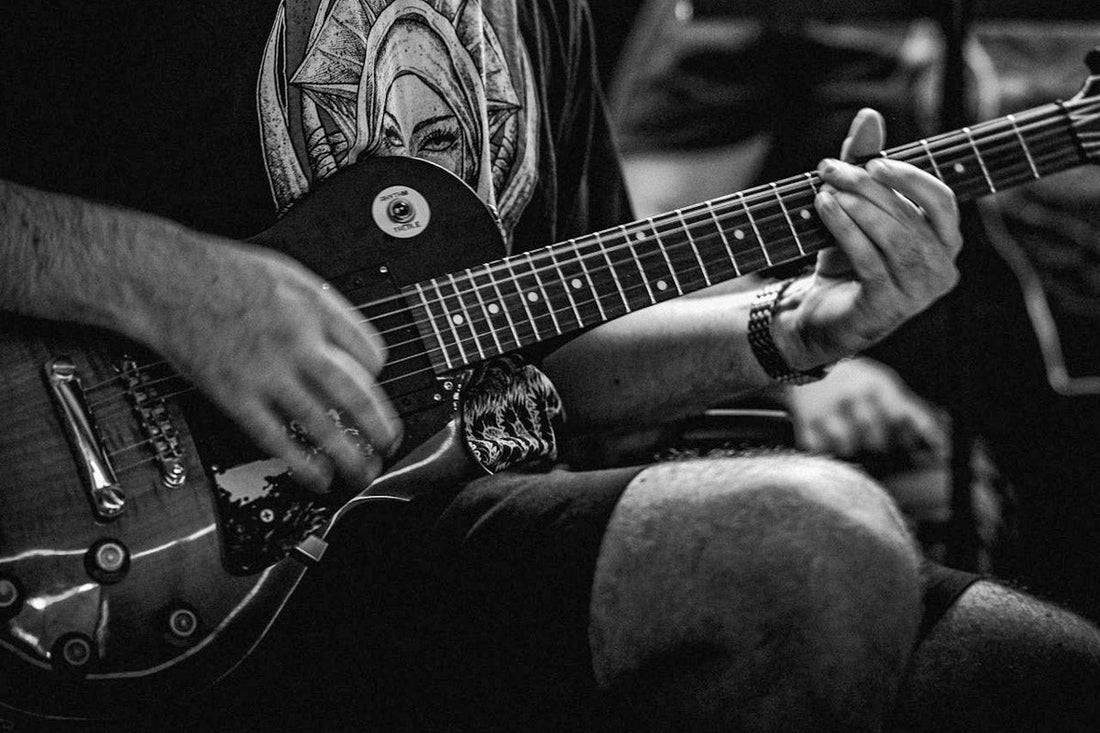
How to Make Your Cheap Guitar Sound Better (Without Spending $500)
If you've been playing guitar long enough, you've probably heard some version of this advice: "Don't worry about your gear, just practice more." And yeah, there's truth in that — but let's be real: a cheap guitar that fights you at every step is not inspiring.
The good news? You don't need to drop a paycheck on a new axe or boutique pedals to get a huge improvement in your tone and feel. With a couple small tweaks (most under $30), you can make that budget-friendly guitar actually fun to play.
Here’s how.
1. Change Your Guitar Strings
The easiest win: throw out those dead, factory strings and put on a fresh set. Old strings lose brightness, intonation, and tuning stability. Even the nicest guitar will sound dull with worn-out strings.
If you want a quick upgrade without thinking too hard, a set of nickel-plated steel strings like Goldbird Electric Guitar Strings will give you balanced tone and a comfortable feel. It's the cheapest, fastest way to make your guitar sound alive again.
2. Get a Proper Guitar Setup
Most “cheap” guitars aren't unplayable — they're just poorly set up out of the box.
-
Check string height at the 12th fret. If it feels like an Olympic event to press down a chord, lower the bridge saddles a touch.
-
Use a tuner and check intonation at the 12th fret. If it's sharp or flat, adjust the saddles until it's dialed in.
If that sounds intimidating, most local shops will do a basic setup for $50–75, which can transform how your guitar feels.
3. Upgrade Your Guitar Picks
This one gets overlooked: the pick is your first point of contact with the strings. A slightly thicker pick, or one with a textured grip, can completely change your attack and consistency.
Goldbird's Matte Grip Guitar Picks were designed for exactly this reason — more control, less slipping, and a tone upgrade that costs basically the price of a coffee.
4. Smooth Out the Nut and Frets
Budget guitars often leave the factory with sharp fret ends or a nut that binds your strings. If you're handy, a set of cheap fret files and some sandpaper can smooth things out. Otherwise, ask a shop to handle it as part of a setup. It makes bends smoother and keeps you from slicing your hand mid-riff.
5. Use an EQ Pedal
You don't need a $300 boutique overdrive. A basic EQ pedal (like the Boss GE-7 or a budget clone) lets you scoop mud, boost highs, and make your amp actually fit the room you're in. It's one of the best bang-for-your-buck upgrades you can add to any rig.
6. Adjust Your Amp Settings
Sometimes the “cheap guitar” problem isn't the guitar — it's the amp settings. Roll back the gain, turn up the mids, and lower the bass a bit. Suddenly your tone cuts instead of disappearing in the mix. Best part? It’s free.
Summary
A cheap guitar doesn't have to sound cheap. Fresh strings, a good setup, and a couple thoughtful tweaks can take that $150 pawn shop find into genuinely fun territory.
And hey — if you're looking for the easiest first step, start with the strings. They'll give you the most noticeable improvement for the least money, and they're the part of your guitar you actually touch every time you play.
Ready to upgrade? Check out the Goldbird Essentials Bundle — strings and picks designed for the next generation of artists.
